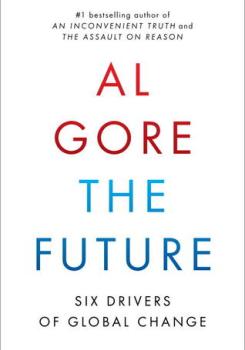What Are the Drivers of Global Change?
An excerpt from “The Future: Six Drivers of Global Change.”
Like many fulfilling journeys, this book began not with answers but with a question. Eight years ago, when I was on the road, someone asked me: “What are the drivers of global change?” I listed several of the usual suspects and left it at that. Yet the next morning, on the long plane flight home, the question kept pulling me back, demanding that I answer it more precisely and accurately—not by relying on preconceived dogma but by letting the emerging evidence about an emerging world take me where it would. The question, it turned out, had a future of its own. I started an outline on my computer and spent several hours listing headings and subheadings, then changing their rank order and relative magnitude, moving them from one category to another and filling in more and more details after each rereading.
As I spent the ensuing years raising awareness about climate change and pursuing a business career, I continued to revisit, revise, and sharpen the outline until finally, two years ago, I concluded that it would not leave me alone until I dug in and tried to thoroughly answer the question that had turned into something of an obsession.
What emerged was this book, a book about the six most important drivers of global change, how they are converging and interacting with one another, where they are taking us, and how we as human beings—and as a global civilization—can best affect the way these changes unfold. In order to reclaim control of our destiny and shape the future, we must think freshly and clearly about the crucial choices that confront us as a result of:

• The emergence of a deeply interconnected global economy that increasingly operates as a fully integrated holistic entity with a completely new and different relationship to capital flows, labor, consumer markets, and national governments than in the past;
• The emergence of a planet-wide electronic communications grid connecting the thoughts and feelings of billions of people and linking them to rapidly expanding volumes of data, to a fast growing web of sensors being embedded ubiquitously throughout the world, and to increasingly intelligent devices, robots, and thinking machines, the smartest of which already exceed the capabilities of humans in performing a growing list of discrete mental tasks and may soon surpass us in manifestations of intelligence we have always assumed would remain the unique province of our species;
• The emergence of a completely new balance of political, economic, and military power in the world that is radically different from the equilibrium that characterized the second half of the twentieth century, during which the United States of America provided global leadership and stability—shifting influence and initiative from West to East, from wealthy countries to rapidly emerging centers of power throughout the world, from nation states to private actors, and from political systems to markets;
• The emergence of rapid unsustainable growth—in population; cities; resource consumption; depletion of topsoil, freshwater supplies, and living species; pollution flows; and economic output that is measured and guided by an absurd and distorted set of universally accepted metrics that blinds us to the destructive consequences of the self- deceiving choices we are routinely making;
• The emergence of a revolutionary new set of powerful biological, biochemical, genetic, and materials science technologies that are enabling us to reconstitute the molecular design of all solid matter, reweave the fabric of life itself, alter the physical form, traits, characteristics, and properties of plants, animals, and people, seize active control over evolution, cross the ancient lines dividing species, and invent entirely new ones never imagined in nature; and
• The emergence of a radically new relationship between the aggregate power of human civilization and the Earth’s ecological systems, including especially the most vulnerable—the atmosphere and climate balance upon which the continued flourishing of humankind depends—and the beginning of a massive global transformation of our energy, industrial, agricultural, and construction technologies in order to reestablish a healthy and balanced relationship between human civilization and the future.
This book is data-driven and is based on deep research and reporting—not speculation, alarmism, naive optimism, or blue-sky conjecture. It represents the culmination of a multiyear effort to investigate, decipher, and present the best available evidence and what the world’s leading experts tell us about the future we are now in the process of creating.
Excerpted from The Future: Six Drivers of Global Change by Al Gore. Copyright © 2013 by Al Gore. Excerpted by permission of Random House, a division of Random House, Inc. All rights reserved. No part of this excerpt may be reproduced or reprinted without permission in writing from the publisher.
Former vice president Al Gore is the author of The Future: Six Drivers of Global Change.